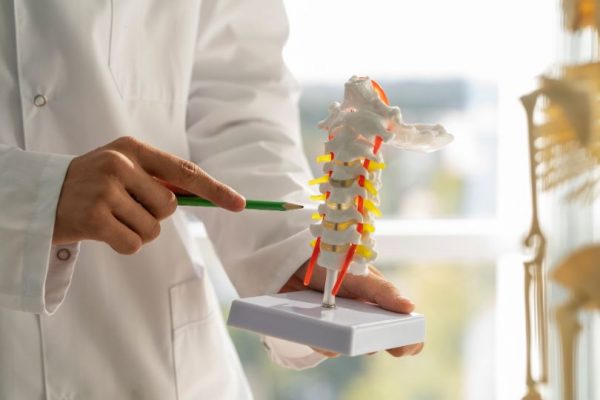If you, your doctor or a mammogram detects a lump in your breast, you’ll likely have one or more diagnostic procedures to determine if the lump is cancerous, including:
Ultrasound
Often, your doctor will suggest a less invasive procedure, such as an ultrasound, before deciding on a biopsy. Ultrasound is a procedure that uses sound waves to create an image of your breast on a computer screen. By investigating this image, your doctor may be able to discern whether the lump is an empty cavity (cyst) or a solid mass. Cysts, which are sacs of fluid, usually aren’t cancerous, although you may want to have a painful cyst drained with a needle.
Biopsy
In some cases, your doctor may want to remove a small sample of tissue (biopsy) for analysis in the laboratory. To do so, he or she may use one of the following procedures:
- Fine-needle aspiration biopsy. The simplest type of biopsy is used for lumps you or your doctor can feel. During the procedure, your doctor uses a thin, hollow needle to withdraw cells from the lump. He or she then sends the cells to a lab for analysis. The procedure isn’t uncomfortable, takes about 30 minutes, and is similar to drawing blood. Another procedure, fine-needle aspiration, is used primarily to remove the fluid from a painful cyst, but it can also help distinguish a cyst from a solid mass.
- Core needle biopsy. During this procedure, a radiologist or surgeon uses a hollow needle to remove tissue samples from a breast lump. As many as 15 samples, each about the size of a grain of rice, may be taken, and a pathologist then analyzes them for malignant cells. The advantage of a core needle biopsy is that it removes tissue, rather than just cells, for analysis. Sometimes your radiologist or surgeon may use ultrasound to help guide the placement of the needle.
- Stereotactic biopsy. This technique is used to evaluate an area of concern that can be seen on a mammogram but that cannot be felt or seen on an ultrasound. A radiologist performs a core needle biopsy, using the mammogram for directions, during the procedure. The stereotactic biopsy usually takes about an hour and is performed using local anesthesia.
- Wire localization. Your doctor may recommend this technique when a worrisome lump is seen on a mammogram but can’t be felt or evaluated with a stereotactic biopsy. Using your mammogram as a guide, a thin wire is placed in your breast and the tip is guided to the lump. Wire localization is a pre-surgery process that helps doctors precisely locate where to perform a biopsy. It gives the surgeon important guidance to ensure the best results.
- Surgical biopsy. This remains one of the most accurate methods for determining whether a breast change is cancerous. During this procedure, your surgeon removes all or part of a breast lump. Complete removal of a small lump will typically be performed through an excisional biopsy. If the lump is larger, only a sample will be taken (incisional biopsy). The biopsy is generally performed on an outpatient basis in a clinic or hospital.
- Estrogen and progesterone receptor tests
If a biopsy reveals malignant cells, your doctor will recommend additional tests such as estrogen and progesterone receptors tests on the malignant cells. These tests help determine whether female hormones affect the way cancer grows. If the cancer cells have receptors for estrogen or progesterone or both, your doctor may recommend treatment with a drug such as tamoxifen that prevents estrogen from binding to these sites.
Staging tests
Staging tests are essential for assessing the size and scope of a cancerous tumor, as well as determining if it has spread beyond its original site. Also, they help your doctor determine the most effective treatment for you. A cancer diagnosis is classified into several stages, ranging from 0 to IV. Stage 0 cancers are also called noninvasive or in situ (in one place) cancers.
Although they don’t have the ability to spread to other parts of your body or invade normal breast tissue, it’s important to have them removed because they eventually can become invasive cancers. Finding and treating a cancerous lump at this stage offers the best chance for a full recovery. Stage I to IV cancers are invasive tumors that have the ability to spread to other areas. Stage I cancer is small and well-localized and has a very successful treatment rate. As the stage of the medical condition progresses, the chances of a cure become slimmer. By stage IV, cancer has spread beyond your breast to other organs, such as your bones, lungs, or liver. Although it may not be possible to eliminate cancer at this stage, its spread may be controlled with radiation, chemotherapy, or both.
Genetic testing
The discovery of BRCA1, BRCA2, and other genes that may significantly increase breast cancer risk has raised a number of emotional and legal questions about genetic testing. A simple blood test can help identify defective BRCA genes, but it’s only 85 percent accurate, and most experts believe that only those women at high risk of hereditary breast or ovarian cancers should be referred for testing. If you’re one of these women, it’s important to know that having a defective BRCA gene doesn’t mean you’ll get breast cancer. In addition, test results cannot determine how high your risk is, at what age you might develop cancer, how aggressively cancer might progress, or what your risk of death may be.
Testing can help assess the risk of breast cancer, enabling you to make better-informed decisions about reducing your risk and staying healthy. Options range from lifestyle changes, closer screening, and therapy with medications such as tamoxifen to extreme measures such as preventive (prophylactic) bilateral mastectomy or removal of your ovaries (oophorectomy). Making these choices can be extremely difficult for any woman. Talking to a genetic counselor is the best way to make a fully-informed decision about genetic testing, taking into account positives, negatives, and restrictions. It can also help to talk to other women who have had to make similar decisions.











